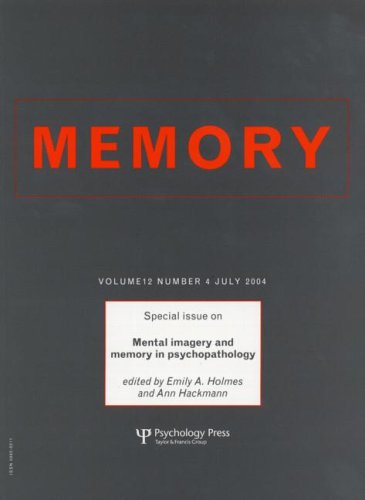(Ebook) Mental Imagery and Memory in Psychopathology: Special Issue of Memory Volume 12 (4) July 2004 by Emily Holmes ISBN 9781841699677, 1841699675
Intrusive mental images in the form of flashbacks have long been recognised as a hallmark of post-traumatic stress disorder. However, clinicians have become increasingly aware that distressing imagery is a more pervasive phenomenon. There appears to be a powerful link between imagery and autobiographical memory. The field of autobiographical memory needs to account for disorders of remembering in psychopathology, including the reliving of past experiences in the form of imagery. While the role of mental imagery in psychopathology has been an under-researched topic, recently, there has been a surge of interest. This Special Issue of Memory, Mental Imagery and Memory in Psychopathology, edited by Emily A. Holmes and Ann Hackmann, presents a novel series of papers investigating emotional, intrusive mental imagery across a wide range of psychological disorders. The topics include post-traumatic stress disorder, other anxiety disorders such as agoraphobia and social phobia, as well as psychosis, bipolar disorder, body dysmorphic disorder, and depression. The roles of imagery in symptom maintenance and in psychological treatment are explored. Further studies using non-clinical samples address information processing issues and imagery qualities. These include innovative approaches to modelling cravings in substance misuse, and the role of imagery in conditioning aversions. Pioneering work is presented on vividness, emotionality, and the type of perspective taken in imagery. This Special Issue begins and ends with theoretical papers that provide complementary approaches: reviewing findings from a clinical psychology perspective and an autobiographical memory perspective. New developments in cognitive therapy require a conceptual framework within which to understand imagery in specific psychopathologies. Since the experience of imagery is not abnormal per se, it is helpful to make links with accounts of 'ordinary' processing. Conway's work on autobiographical memory may provide such a framework. According to this model, images are thought to be forms of autobiographical memory, referred to as sensory perceptual knowledge that is experience-near. Indeed, although they may be unaware at the time, patients often later report that images appear linked to autobiographical experiences. However, despite being a form of memory, images may be experienced as actual events happening in the present, or as representing the imagined future, and project meaning for the self. Images may provide particularly potent means of carrying emotion and information about the self, compared to other forms of processing. In this Special Issue, Conway presents novel insights that suggest imagery is highly associated with self goals. Imagery can both reflect and maintain goals linked to psychopathology. An exciting consequence of this framework is that imagery can be used to resolve dysfunctional states in therapy. Imagery in psychopathology tends to be highly intrusive, distressing, and repetitive. It may arise 'out of the blue', i.e. directly triggered from autobiographical memory. Images can hijack attention and reflect negative self goals. It may therefore understandably provoke a variety of cognitive and behavioural responses. For example, interpreting the image as representing fact rather than fiction, trying to block it out of mind, or avoiding triggers for the image. Cognitive behavioural therapy targets such responses because they are thought to maintain psychopathology in a vicious cycle. In contrast, responses that update the image in memory could break that cycle. Further there is a role for positive, alternative images. Conway suggests that generating new images can generate new goals and thus ameliorate distress: an insight that may further enhance therapy. This book appeals to clinicians and experimental psychologists working in memory and emotion. It provides a forum to forge links between experi
*Free conversion of into popular formats such as PDF, DOCX, DOC, AZW, EPUB, and MOBI after payment.


